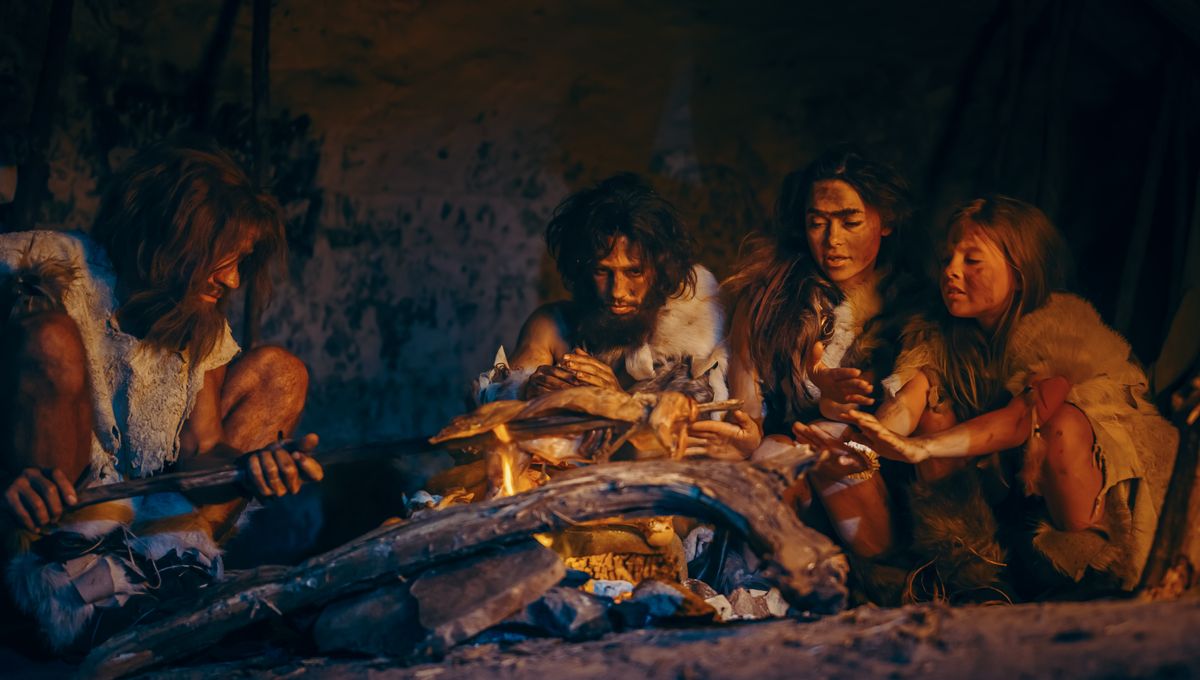
Being part of a small hunter-gatherer tribe can really limit your options when it comes to finding a mate, especially if most of the people in your clan are your own brothers and sisters. According to the results of a new genetic study, Europe’s last Stone Age foragers got around this problem by making sure to mingle with non-related hunter-gatherers, thus preventing inbreeding while also keeping clear of the growing Neolithic farmer population.
Researchers sequenced the genomes of 10 skeletons found at the iconic Stone Age sites of Hoedic, Téviec, and Champigny, in France. According to the study authors, these ancient settlements are known for their “unusually well-preserved and rich burials.”
Radiocarbon dating of the collagen in the bones confirmed that all of the skeletons were roughly 6,700 years old, and therefore hailed from the period when the Mesolithic gave way to the Neolithic, as hunter-gatherer groups were replaced by farming communities. “These circumstances could have cornered these groups into severe genetic drift due to extremely small population size, leaving no alternative to consanguinity and its deleterious consequences,” write the researchers.
This grim prospect is strengthened by the fact that all three sites contain shared graves, with multiple individuals buried alongside one another. Such a practice was unusual for this period of the Stone Age and has previously been interpreted as evidence that these people were blood relatives.
Contradicting this narrative, however, study author Dr Amélie Vialet explained in a statement, “Our results show that in many cases – even in the case of women and children in the same grave – the individuals were not related. This suggests that there were strong social bonds that had nothing to do with biological kinship and that these relationships remained important even after death.”
Isotopic data was then used to confirm that the inhabitants of each site existed as distinct groups. For instance, higher levels of marine proteins in the bones from Hoedic indicates that the subsistence and dietary practices of these individuals differed from those of Téviec and Champigny.
Based on this isotopic data, the study authors determined that some of the women at Hoedic were raised on terrestrial proteins before switching to a more heavily marine diet later in life. This suggests that women were exchanged between different hunter-gatherer groups, probably as a means of preventing inbreeding.
“Our genomic analyses show that although these groups were made up of few individuals, they were generally not closely related,” said study author Luciana G. Simões. “Furthermore, there were no signs of inbreeding.”
“However, we know that there were distinct social units – with different dietary habits – and a pattern of groups emerges that was probably part of a strategy to avoid inbreeding,” Simões added.
Previously, it had been suggested that some of the women buried at these sites were actually raised in farming settlements – where they would have consumed more terrestrial animals – before later being assimilated into hunter-gatherer groups. However, based on their genetic analysis, the researchers confirm that “these females […] did not come from Neolithic populations, as they are within the [hunter-gatherer] genetic variation and show no traces of Neolithic farmer-related ancestry.”
“Hence, contrary to previous conclusions based on stable isotope data from the same sites, the Late Mesolithic forager community was limited in mate-exchange to neighboring hunter-gatherer groups, to the exclusion of Neolithic farmers,” they write.
In accordance with these results, the researchers are able to present a more accurate picture of the interactions between the last hunter-gatherers and first farmers to occupy western Europe. More specifically, they show that any gene flow that may have occurred between the two groups was “unidirectional and resulted from individuals with [hunter-gatherer] ancestry joining farmer groups and not the other way around”.
The study is published in the Proceedings of the National Academy of Sciences.
Source Link: How Did Stone Age Hunter-Gatherers Avoid Inbreeding?